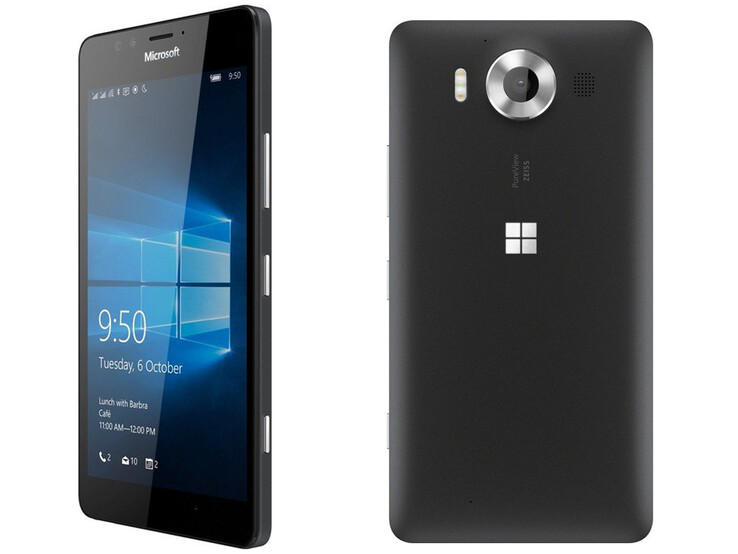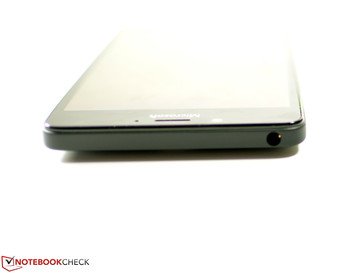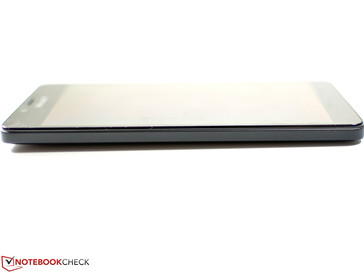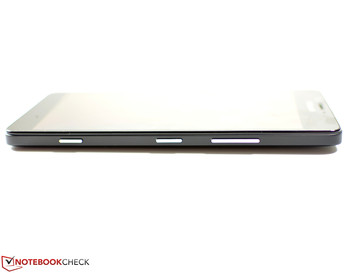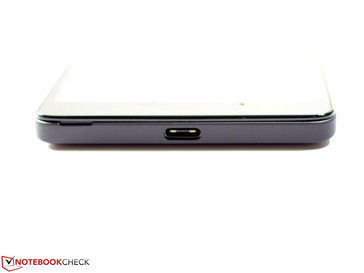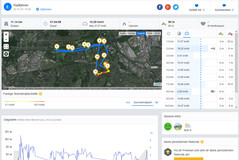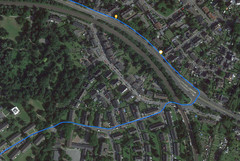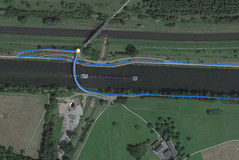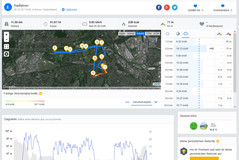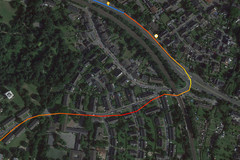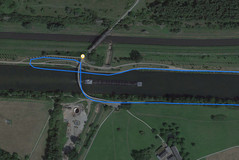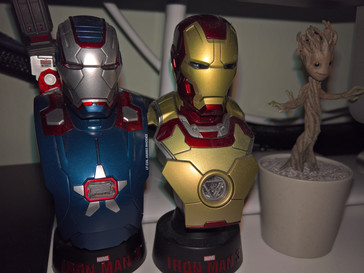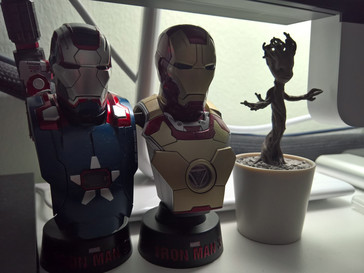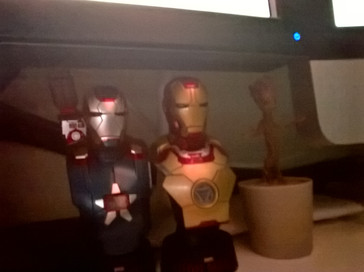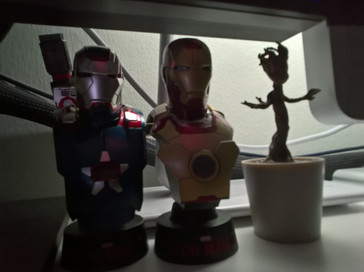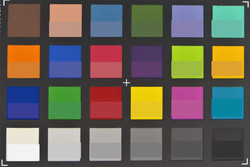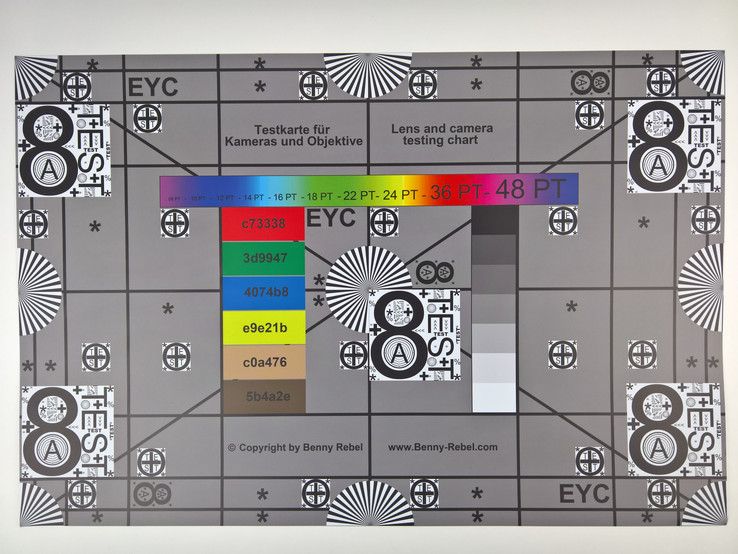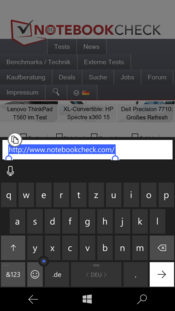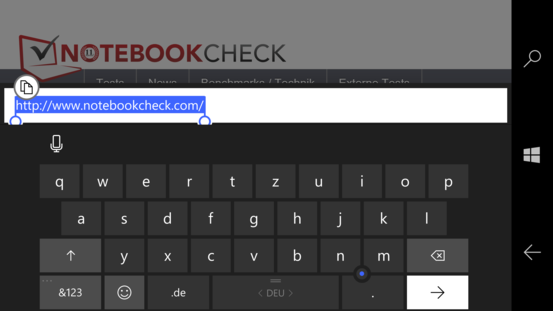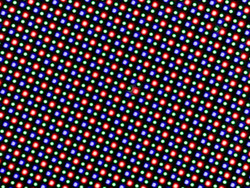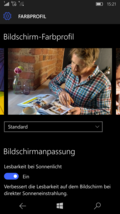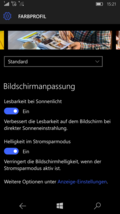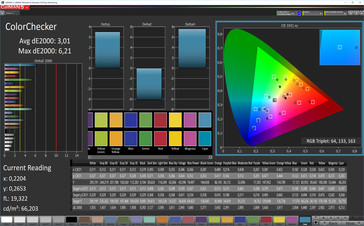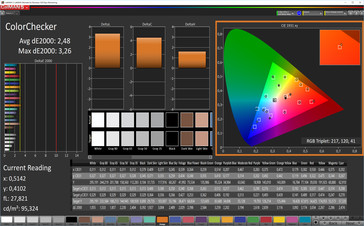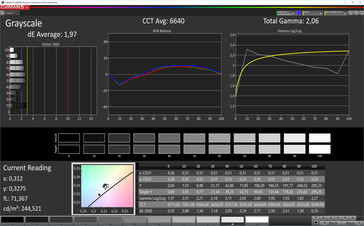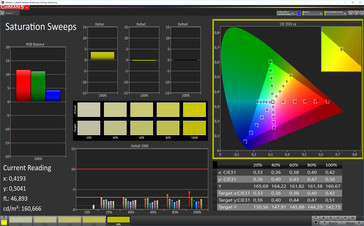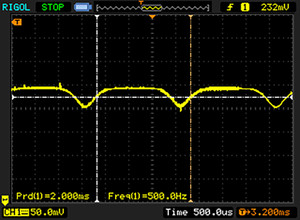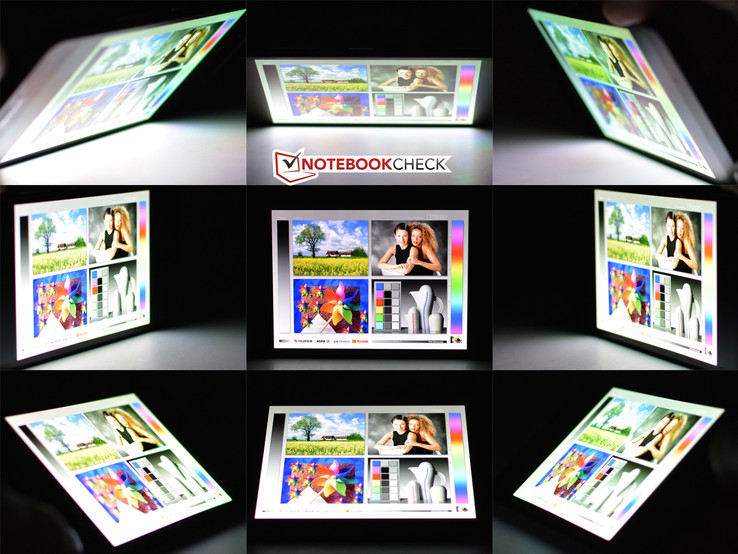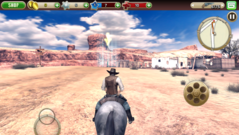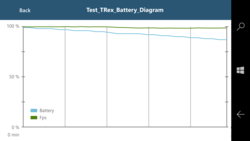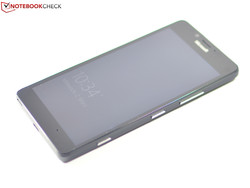Microsoft Lumia 950 Smartphone Review

For the original German review, see here.
Microsoft skips a number, and thus the Lumia 950 is the direct successor of the Lumia 930 that we tested in 2014, which was built by Nokia back then. As usual, the latest version of the Windows Phone flagship offers a rich and powerful configuration. Our Lumia 950 DS review sample also features a dual-SIM function, but otherwise it is not that different from the Lumia 950. It is powered by Qualcomm's Snapdragon 808 hexa-core SoC that clocks at 1.8 GHz and an integrated Adreno 418 graphics card as well as a generous 3 GB of RAM. The 32 GB storage device can be expanded by up to 200 GB via a micro-SD.
Consequently, the Lumia 950 DS faces flagships from the competition, such as Apple's iPhone 6S, Samsung's Galaxy S6 and Sony's Xperia Z5 as well as its predecessor, the Nokia Lumia 930. Google's Nexus 6P, Asus' ZenFone 2 Deluxe ZE551ML and HTC's One M9 are also included in our benchmark course as well as a few other comparisons.
Case
Unfortunately, Microsoft does not continue where the former Nokia Lumia 930 left off in the choice of materials for the casing. The Lumia 950 is no longer metal, and now relies on matte plastic for the removable back cover. Although that makes the lightly rounded back pleasant to hold and relatively unsusceptible to scratches, it does not really add a flagship feeling to the smartphone. Despite the removable back - which, by the way, is fairly difficult to remove - the handset reaps in the full score in terms of stability and impeccable build. No matter how much pressure we apply, neither cracking noises nor image distortions are audible or visible. Only the keys on the casing's right are rather loose, but they still have a clear pressure point.
Microsoft's silver logo dominates on the glass front, which is otherwise restrained. The plain design is also reflected in the available colors; Microsoft's Lumia 950 is available only in black or white. Third-party manufacturers will have to set colorful accents with optional covers now.
Unlike the predecessor, a removable battery and slots for two nano-SIM cards and a micro-SD card are found under the removable back cover. Once again, Microsoft's Lumia 950 is visibly slim with a height of 8.2 mm (~0.32 in). It is also 20 grams (~0.7 oz) lighter than its predecessor with a total weight of now 150 grams (~5.3 oz). This puts it on the level of its rivals; Sony's Xperia Z5 weighs slightly more.
Connectivity
The main point of criticism of the predecessor's connectivity - the lack of a micro-SD slot for easy storage expansion - has now been resolved by Microsoft. Up to 200 GB of additional storage are possible. As usual, it is possible to install apps directly on the micro-SD card. However, this slot as well as both SIM slots can only be accessed after removing the battery. Thus, hot-plugging is not supported. The Lumia 950 is powered by Qualcomm's Snapdragon 808 MSM8992 SoC with a clock rate of 2 GHz and the integrated Adreno 418 graphics card as well as 3 GB of RAM. Once again, the Lumia 950 supports the Qi standard for wireless recharging via a compatible charging station. The layout of the other interfaces and the ergonomically perfectly placed buttons correspond with that of the predecessor. Microsoft's latest top model does not feature a fingerprint scanner that has become good feature among the flagship opponents. The manufacturer counters that with its retina scanner, Windows Hello. In addition, the USB-C 3.1 port (Gen 1, 5 GB/s) supports USB OTG.
Software
Like the larger Microsoft Lumia 950 XL that we have already tested, the Lumia 950 relies on the latest Windows 10 Mobile operating system. Microsoft has adapted it from the larger versions of desktop systems. Users familiar with the former Windows Phone 8.x system will adapt to it immediately. Once again, the programs in Live Tile design can be modified in size and placed on the home screen. The infinite transparency settings for the tiles and the genuine background images that the user can customize are new. The quick settings bar familiar from Android and iOS can now also be folded out. That was also the purpose of "Project Astoria" stopped late last year: It dealt with emulating Android apps for Windows 10 Mobile. "Project Islandwood" for porting Apple iOS apps exists parallel to that. That is essential as the latest Windows 10 Mobile also suffers under too few apps, even if it runs very stably and smoothly. The personal assistant "Cortana" that functions very decently is also installed. Like Apple, Microsoft now allows specific apps to continue processes started on the smartphone on a Windows 10 PC. Unfortunately, the wide application support is still lacking.
"Continuum" allows a desktop-like user experience in conjunction with an external screen, mouse and keyboard. Dedicated accessories, such as the Display Dock, support this. A drawback is that only the so-called universal apps like Microsoft's Office Suite or the maps app support "Continuum". Thus, the app developers are highly requested for making these features suitable for the real world. Another new feature is Windows' "Hello" that enables unlocking the screen without touch. That's right: Windows is the first to offer this James Bond-like Gadget! An infrared iris scanner that functions quickly but not always reliably under more difficult conditions, such as low-light or through glasses, is available. More information about the operating system can be found in our detailed review of the Microsoft Lumia 950 XL.
Communication & GPS
Microsoft's Lumia 950 uses HSPA+ or LTE Cat.6 (up to 300 Mbit/s) for mobile Internet connections. The review sample's high frequency coverage also enables reliable Internet connection abroad. Qualcomm's Wi-Fi module supports all the major standards with IEEE 802.11 a/b/g/n/ac, and transmits in both the 2.4 and 5 GHz bands. The range also proved very good in the test at a distance of approximately 10 meters (~33 ft) to the Telecom router and through several indoor walls. Opening pages always functioned impeccably and relatively fast. Video streaming via YouTube also functioned flawlessly.
The review sample uses both GPS and GLONASS for localization. Finding satellites via the map app is fast indoors, and also relatively accurate with approximately 10 meters (~33 ft). For a more detailed review, we took Microsoft's Lumia 950 and Garmin's Edge 500 navigation system on a bike ride through our test route. As expected, Garmin's Edge 500 is more accurate, but the smartphone's deviations are kept within pleasingly tight limits. It is notable that the review sample determines the current position quite frequently, and thus displays a deviation of only approximately 140 meters (~459 ft) on the total route.
Telephone & Call Quality
The clearly arranged phone app of Microsoft's Lumia 950 offers the most important features, such as keypad, log and favorites. Skype has also been implemented nicely. Voices were rendered clearly and loudly during the test calls. The contact also confirmed a good intelligibility. The hands-free feature functioned well and at an acceptable volume, although a minor echo was heard.
Cameras & Multimedia
Like the larger Lumia 950 XL, the Lumia 950 is equipped with a 5 megapixel wide angle camera (2592x1936 pixels) with an f/2.4 aperture on the front. Videos are recorded in Full HD. The pictures look very appealing in good ambient light. Although the sensor captures a lot of light, a clear image noise is visible in the low-light test.
The rear-facing camera has a resolution of 20 megapixels (4864x3648 pixels, 4:3). However, only 17.7 megapixels can be used effectively in JPG format due to the digital 2x zoom. Even 19 MP are possible in the loss-free DNG format. The aperture is f/1.9. In addition to an optical image stabilizer, the lens has an auto focus with two pressure points and a triple LED flash. Videos can be recorded in 4K at 30 fps. The image quality is very good with decent sharpness and good color reproduction, especially in daylight or when the object is well-illuminated. However, the Lumia 950 cannot compete with Sony's Xperia Z5 Premium in a direct comparison. The camera does a really good job in low-light performance. Both the color reproduction and image sharpness are compelling when using the flash.
More information about the camera app and video performance can be found in the detailed test of the Microsoft Lumia 950 XL
To examine the image sharpness more closely, we photographed our test chart as full-frame as possible in controlled light conditions. The photos are taken in automatic mode without editing them afterward. Here, slightly oversaturated colors are visible. However, the final colors look natural.
The sharpness is evaluated via a test chart that is again photographed in artificial light and as full-frame as possible. The Lumia 950 scores well here; the high image sharpness particularly in the image center is pleasing. It only decreases slightly toward the edge. Minor reproduction errors become evident in fonts and color gradients.
Accessories
Microsoft has included a 15 watt (5 volt, 3 ampere) power supply with a fixed cable and a USB Type A to Type-C data cable in the Lumia 950's box. Diverse accessories, such as a Display Dock at approximately 110 Euros (~$121), various cases, headsets, charging cushions or battery packs, are available in Microsoft's Shop.
Warranty
Microsoft includes a warranty period of 24 months. Battery and accessories are covered for six months.
Input Devices & Handling
The 5.2-inch, capacitive touchscreen in Microsoft's Lumia 50 is protected by Corning Gorilla Glass 4. Inputs are implemented accurately up into the corners. Typing is especially fast and, thanks to the screen and key size, very accurate. The screen's gliding qualities are also very good.
It is possible to place the keyboard edge-to-edge, right or left depending on personal preferences. However, the entire width is not used in landscape mode, which would enhance fast typing even more. The cursor can be placed where desired and moved quickly via pressing the TrackPoint in the keyboard. The input device conveys an overall very intuitive feel.
Like the larger model, the Lumia 950 has a dedicated camera button with two pressure levels. As with a digital camera, the latter is used for focusing and releasing. The camera app can also be opened from standby with this button. Unlike the Lumia 950 XL, the keys are situated in their usual place in the review sample.
Display
The 5.2-inch AMOLED screen in Microsoft's Lumia 950 has a resolution of 2560x1440 pixels. This leads to a very high pixel density of 564 PPI. Currently, only Sony's Xperia Z5 Premium offers more in an equally sized screen. Pixels are not visible to the naked eye, even on the review sample's very sharp screen.
The average maximum brightness of 298 cd/m² is lower than that of the rivals, although the illumination of 92% is very homogeneous. However, the maximum brightness climbs from 312 to 331 cd/m² when bright and dark areas are distributed evenly (APL 50). Enabling the automatic brightness sensor lets the brightness climbs to very good 676 cd/m², which is at the very front in the premium league.
Due to inactive pixels, the installed AMOLED technology allows a really deep black when required. The resulting contrast ratio theoretically tends toward infinity and is impressive.
| |||||||||||||||||||||||||
Brightness Distribution: 92 %
Center on Battery: 292 cd/m²
Contrast: ∞:1 (Black: 0 cd/m²)
ΔE Color 2.48 | 0.5-29.43 Ø5
ΔE Greyscale 1.97 | 0.57-98 Ø5.3
Gamma: 2.06
| Microsoft Lumia 950 Adreno 418, 808 MSM8992, 32 GB eMMC Flash | Nokia Lumia 930 Adreno 330, 800 MSM8974, 32 GB eMMC Flash | Apple iPhone 6S A9 / PowerVR GT7600, A9, Apple AP0064K (iPhone NVMe) | Sony Xperia Z5 Adreno 430, 810 MSM8994, 32 GB eMMC Flash | Samsung Galaxy S6 Mali-T760 MP8, Exynos 7420, 32 GB UFS 2.0 Flash | |
|---|---|---|---|---|---|
| Screen | -136% | 4% | -89% | -1% | |
| Brightness middle | 292 | 275 -6% | 552 89% | 669 129% | 335 15% |
| Brightness | 298 | 278 -7% | 549 84% | 624 109% | 345 16% |
| Brightness Distribution | 92 | 89 -3% | 87 -5% | 85 -8% | 89 -3% |
| Black Level * | 0.39 | 0.68 | |||
| Colorchecker dE 2000 * | 2.48 | 10.99 -343% | 3.4 -37% | 7.96 -221% | 2.51 -1% |
| Greyscale dE 2000 * | 1.97 | 8.29 -321% | 4.16 -111% | 10.95 -456% | 2.59 -31% |
| Gamma | 2.06 107% | 2.16 102% | 2.21 100% | 2.61 84% | 2.43 91% |
| CCT | 6640 98% | 6731 97% | 7288 89% | 7402 88% | 6424 101% |
| Contrast | 1415 | 984 | |||
| Color Space (Percent of AdobeRGB 1998) | 62.18 | ||||
| Color Space (Percent of sRGB) | 95.93 |
* ... smaller is better
The screen's color reproduction is very impressive. The user can select from three different color profiles, and the advanced mode allows manual adjustments. The most natural mode is found in Standard, which achieved the best outcomes in all sectors. The grayscale level reproduction is very good with a maximum DeltaE deviation of 1.97. Both the color temperature and gamma are also very close to ideal. The mixed colors are also well-implemented, and the average DeltaE deviation of 2.48 is within acceptable limits. The naked eye will not see any potential deviations from the norm.
Screen Flickering / PWM (Pulse-Width Modulation)
| Screen flickering / PWM detected | 500 Hz | ||
The display backlight flickers at 500 Hz (worst case, e.g., utilizing PWM) . The frequency of 500 Hz is relatively high, so most users sensitive to PWM should not notice any flickering. However, there are reports that some users are still sensitive to PWM at 500 Hz and above, so be aware. In comparison: 53 % of all tested devices do not use PWM to dim the display. If PWM was detected, an average of 17900 (minimum: 5 - maximum: 3846000) Hz was measured. | |||
Performance
Qualcomm's Snapdragon 808 MSM8992 clocked at 2 GHz and the integrated Adreno 418 graphics card are installed in the Lumia 950. They can fall back on 3 GB of RAM. Although the smartphone is sufficiently powered for all routine tasks, its configuration is weaker than that of its rivals. Great job: The Lumia 950 is the only smartphone to date that does not throttle the Snapdragon 808 SoC during full load - as we will see in the Temperature section.
Unfortunately, Microsoft's store still does not provide many benchmarks for cross-platform comparisons. Unlike Android smartphones, Windows 10 does not use the OpenGL interface in the GFX benchmark, but DirectX instead. Consequently, the results are also much worse than in comparable opponents. However, Basemark OS II is comparable and shows that some rivals have considerably higher performance reserves. Then again, the review sample can score in Linpack, and outperforms all opponents, especially in the multi-core test.
Comparing the storage device's speed is also difficult. Only Basemark OS II provides a vague hint that the storage operates a lot faster than all opponents.
Everyday use was never a problem even with multitasking, loading times were agreeably short, and subjectively, the smartphone always had more than enough power in reserve.
| GFXBench 3.0 | |
| 1920x1080 1080p Manhattan Offscreen (sort by value) | |
| Microsoft Lumia 950 | |
| Apple iPhone 6S | |
| Sony Xperia Z5 | |
| Samsung Galaxy S6 | |
| Google Nexus 6P | |
| Asus Zenfone 2 Deluxe ZE551ML | |
| HTC One M9 | |
| on screen Manhattan Onscreen OGL (sort by value) | |
| Microsoft Lumia 950 | |
| Apple iPhone 6S | |
| Sony Xperia Z5 | |
| Samsung Galaxy S6 | |
| Google Nexus 6P | |
| Asus Zenfone 2 Deluxe ZE551ML | |
| HTC One M9 | |
| Basemark X 1.1 - Medium Quality (sort by value) | |
| Microsoft Lumia 950 | |
| Nokia Lumia 930 | |
| HTC One M9 | |
On the other hand, the browser-based benchmarks can be compared very well. Microsoft relies on its new Edge Browser that is considerably faster and better to use than the former versions. Although Apple's iPhone 6S and Google's Nexus 6P both clearly surpass the Lumia 950, it is more than impressive. Websites loaded quickly and the overall performance was beyond reproach in our practical test.
| Sunspider - 1.0 Total Score (sort by value) | |
| Microsoft Lumia 950 | |
| Nokia Lumia 930 | |
| Apple iPhone 6S | |
| Sony Xperia Z5 | |
| Samsung Galaxy S6 | |
| Google Nexus 6P | |
| Asus Zenfone 2 Deluxe ZE551ML | |
| HTC One M9 | |
| Google V8 Ver. 7 - Google V8 Ver. 7 Score (sort by value) | |
| Microsoft Lumia 950 | |
| Apple iPhone 6S | |
| Sony Xperia Z5 | |
| Google Nexus 6P | |
| HTC One M9 | |
| Octane V2 - Total Score (sort by value) | |
| Microsoft Lumia 950 | |
| Nokia Lumia 930 | |
| Apple iPhone 6S | |
| Sony Xperia Z5 | |
| Samsung Galaxy S6 | |
| Google Nexus 6P | |
| Asus Zenfone 2 Deluxe ZE551ML | |
| HTC One M9 | |
| Mozilla Kraken 1.1 - Total (sort by value) | |
| Microsoft Lumia 950 | |
| Nokia Lumia 930 | |
| Apple iPhone 6S | |
| Sony Xperia Z5 | |
| Google Nexus 6P | |
| Asus Zenfone 2 Deluxe ZE551ML | |
| HTC One M9 | |
| WebXPRT 2015 - Overall (sort by value) | |
| Microsoft Lumia 950 | |
| Apple iPhone 6S | |
| Sony Xperia Z5 | |
| Google Nexus 6P | |
| HTC One M9 | |
* ... smaller is better
Games
The strong SoC allows the Lumia 950 to even render more sophisticated 3D games smoothly. The bright, high-contrast screen with decent color reproduction also contributes to that. The control is impeccable thanks to good gliding qualities, high accuracy and quick implementation of all inputs. The motion sensors do not give any reason for complaint, either. The only drawback is the speaker's rear-sided positioning as it is often covered by fingers.
Emissions
Temperature
Unfortunately, Microsoft's Lumia 950 is not exactly restrained in terms of surface temperatures. We measured an average of 30 °C (~86 °F) on the underside and 30.8 °C (~87 °F) on the upper side while idling. The surface heats up to 47.5 °C (~117 °F) in certain places when we put the handset under full load via the app "Asphalt 8". An average of 42.4 °C (~108 °F) was reached here. Rivals like Apple's iPhone 6S with at most 38.4 °C (~101 °F) or Sony's Xperia Z5 with a maximum of 39.4 °C (~103 °F) remain much cooler. However, the temperature development is not critical in everyday use.
We checked whether the ascertained rates affect the Lumia 950's performance with the battery test of the GFXBench app. It performs the T-Rex test thirty times in succession, while recording both the frame rate and battery state - with a very surprising outcome. The performance never decreases and almost remains stable over the entire test course. Some rivals are clearly defeated here; especially Sony's Xperia Z5 shows a loss of approximately 30%.
(-) The maximum temperature on the upper side is 46.4 °C / 116 F, compared to the average of 35 °C / 95 F, ranging from 21.9 to 56 °C for the class Smartphone.
(-) The bottom heats up to a maximum of 47.5 °C / 118 F, compared to the average of 33.8 °C / 93 F
(+) In idle usage, the average temperature for the upper side is 30.8 °C / 87 F, compared to the device average of 32.7 °C / 91 F.
Speaker
As mentioned before, Microsoft has placed the speaker in the Lumia 950 a bit unfavorably on the rear side on level with the camera module. Thus, it is often covered by a hand or a finger. At least the slightly protruding camera lifts the smartphone a bit when it is placed on a table so that the sound is not completely muffled. The maximum volume of approximately 85 dB(A) is generally acceptable. The rendered sound quality can be called good. As expected, the diagram of our Pink Noise measurement reveals a very low volume primarily in the bass range that climbs erratically at about 250 Hz. It increases consistently toward the ultra-high pitches. The decline in the medium trebles is very low. This leads to a somewhat tinny, very bass-poor sound - especially at high volumes.
Therefore, using the mini-audio jack is recommendable for music enjoyment. It renders a static-free sound at a good maximum volume.
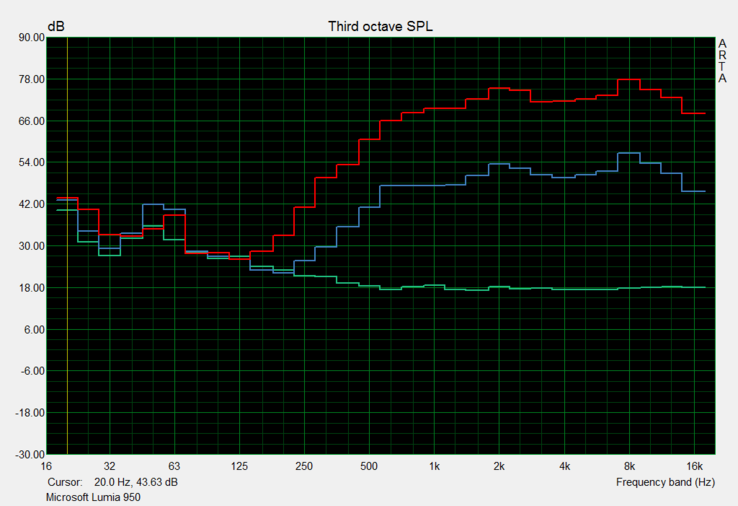
Energy Management
Power Consumption
The measured idle power consumption of the Lumia 950 is particularly high in the category comparison, and is sometimes twice as high as that of its rivals. Samsung's Galaxy S6 and Apple's iPhone 6S in particular are considerably more frugal here. The review sample closes in on the field during load again, and is even more modest than some opponents. We did not ascertain any consumption in a turned off state, and the standby rate of 0.29 watts is also very good. It climbs to a till acceptable 0.41 watts when Windows Hello is enabled.
As usual with Lumia handsets, the Qi standard for wireless charging is also installed in the Lumia 950. The included power supply also supports Quick Charge. 50% is available in just one hour, and the handset is fully recharged within two hours.
| Off / Standby | |
| Idle | |
| Load |
|
| Microsoft Lumia 950 | Nokia Lumia 930 | Sony Xperia Z5 | Samsung Galaxy S6 | Apple iPhone 6S | HTC One M9 | Asus Zenfone 2 Deluxe ZE551ML | Google Nexus 6P | |
|---|---|---|---|---|---|---|---|---|
| Power Consumption | 36% | 25% | 49% | 48% | 13% | 22% | 25% | |
| Idle Minimum * | 1.97 | 1.1 44% | 0.7 64% | 0.4 80% | 0.5 75% | 1.1 44% | 1.1 44% | 0.83 58% |
| Idle Average * | 2.42 | 1.4 42% | 1.7 30% | 0.6 75% | 1.6 34% | 2 17% | 2.2 9% | 1.09 55% |
| Idle Maximum * | 2.96 | 1.8 39% | 1.8 39% | 1.2 59% | 1.9 36% | 2.4 19% | 2.4 19% | 1.17 60% |
| Load Average * | 5.94 | 3.8 36% | 5.6 6% | 5 16% | 2.5 58% | 7.2 -21% | 4.2 29% | 7.49 -26% |
| Load Maximum * | 7.79 | 6.5 17% | 8.7 -12% | 6.8 13% | 4.8 38% | 7.5 4% | 7.2 8% | 9.51 -22% |
* ... smaller is better
Battery Runtime
Although our analysis shows slightly better runtimes despite a smaller battery (3000 mAh, 12 Wh) compared with the former Nokia Lumia 930, the rivals prove that more efficiency is possible. Samsung's Galaxy S6 in particular lasts 42% longer on average. 4:10 hours is not a good rate, especially in the everyday Wi-Fi browsing test using a screen brightness setting of 150 cd/m². The Lumia can again surpass some opponents with 9.5 hours in the video playback test performed under the same conditions, and is almost on par with Sony's Xperia Z5. However, overall, the runtimes seen individually are quite decent.
| Microsoft Lumia 950 Adreno 418, 808 MSM8992, 32 GB eMMC Flash | Nokia Lumia 930 Adreno 330, 800 MSM8974, 32 GB eMMC Flash | Sony Xperia Z5 Adreno 430, 810 MSM8994, 32 GB eMMC Flash | Apple iPhone 6S A9 / PowerVR GT7600, A9, Apple AP0064K (iPhone NVMe) | Samsung Galaxy S6 Mali-T760 MP8, Exynos 7420, 32 GB UFS 2.0 Flash | HTC One M9 Adreno 430, 810 MSM8994, 32 GB eMMC Flash | Asus Zenfone 2 Deluxe ZE551ML PowerVR G6430, Z3580, 128 GB eMMC Flash | Google Nexus 6P Adreno 430, 810 MSM8994, 32 GB eMMC Flash | |
|---|---|---|---|---|---|---|---|---|
| Battery Runtime | -7% | 26% | 24% | 42% | -2% | 68% | 23% | |
| Reader / Idle | 1500 | 1387 -8% | 1669 11% | 1510 1% | 1300 -13% | 805 -46% | 1447 -4% | |
| H.264 | 570 | 600 5% | 699 23% | 421 -26% | 533 -6% | |||
| WiFi v1.3 | 250 | 438 75% | 492 97% | 475 90% | 348 39% | 420 68% | 375 50% | |
| Load | 187 | 175 -6% | 213 14% | 137 -27% | 278 49% | 236 26% | 280 50% | |
| WiFi | 1002 | 575 | 573 |
Pros
Cons
Verdict
Microsoft's Lumia 950 is a decent smartphone with state-of-the-art equipment and without major shortcomings. The SoC is sufficiently fast for all applications and, for the first time in a smartphone, the installed Qualcomm Snapdragon 808 does not throttle under load. The generous storage can be expanded easily via a micro-SD card. The camera modules are good and also take decent photos, especially in low light. The new USB Type-C port with USB 3.1 is cutting edge. The rivals still lag behind in this regard. A great feature is "Continuum" that represents a real added value in conjunction with the optional display dock - particularly for business users. The removable battery compensates for the not quite perfect battery life. Microsoft has replaced the sorely missed fingerprint scanner for unlocking the smartphone with its Windows Hello function. However, the iris scan could be slightly more reliable sometimes.
Microsoft's Lumia 950 is a good Windows 10 smartphone with decent equipment and interesting technical features.
Unfortunately, the new operating system does not yet function quite smoothly. However, Microsoft continuously improves this via software updates. Windows 10 Mobile is generally very intuitive and fast to use, and its clearly arranged design is agreeable. The biggest drawback is probably the somewhat limited offerings in the app store. Users who can accept the mentioned shortcoming and are not deterred by the high price will find a good Windows-based smartphone that does not convey a genuine flagship feeling. By comparison, the larger Microsoft Lumia 950XL is currently the better choice.
Microsoft Lumia 950
-
03/03/2016 v5(old)
Michael Moser


 Deutsch
Deutsch English
English Español
Español Français
Français Italiano
Italiano Nederlands
Nederlands Polski
Polski Português
Português Русский
Русский Türkçe
Türkçe Svenska
Svenska Chinese
Chinese Magyar
Magyar